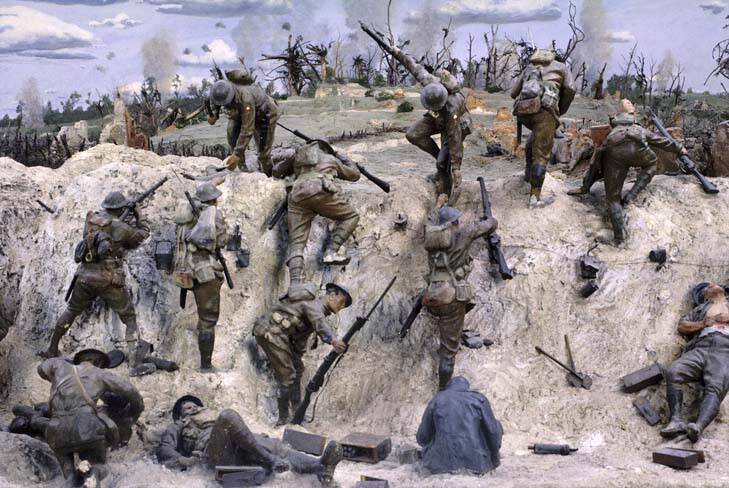Julia Gillard will today give $27 million to the Australian War Memorial to refurbish World War I galleries, including the historic dioramas depicting grim battle scenes.
Subscribe now for unlimited access.
or signup to continue reading
She will use the announcement to pay tribute to the more than 60,000 Australians who died in that conflict.

The War Memorial, which is expecting huge crowds for Anzac Day, will finish the project on the sensitive area in time for the Anzac Day ceremonies next year.
Some of the dioramas, such as the depiction of Lone Pine, pre-date the memorial's Canberra building and were originally installed in the Melbourne site.
The Prime Minister, who is taking a close interest in preparations for the centenary, will acknowledge the War Memorial's status as ''a very special place'' for Australians to remember those who died for their country.
With not a single Gallipoli veteran remaining, she will pay homage to the Anzac legend.
Ms Gillard will also reassure the service community that the heritage-listed dioramas will be carefully preserved.
The grant will allow the memorial to re-arrange the display to put the hand-made scenes in chronological order.
The memorial will also use the money to upgrade the entire gallery and introduce computer-based interactive programs, bringing it into line with the style of other galleries.
Veterans Affairs Minister Warren Snowdon has been made the Minister assisting the Prime Minister on the centenary of Anzac to ensure the commemorations are given priority.
He believes the refurbishment of World War I galleries will be a fitting tribute to the 400,000 Australians who served in that theatre, including those who died.
The main building of the War Memorial was completed in 1941 but it was not until 1971 that the eastern and western wings were added, finally allowing room for adequate display of World War II material.
The dioramas, or ''picture models'', date back to the beginning of the memorial.
One, titled Somme Winter, depicts a trench located west of Gueudecourt, showing the grim conditions in which Australians fought and lived.
The small funk hole, roofed by duckboard and covered with a waterproof sheet, is where the men mostly slept during winter.
The dioramas were first suggested by official war artist Will Dyson and official war historian Charles Bean, to give a more vivid impression of war than conveyed through photographs and paintings.
The memorial says the dioramas were designed to create an emotional account of the experiences of Australians who fought in the First World War.
''They provide a broad picture of the places where major battles were fought and establish the context for other items on display,'' it says.

